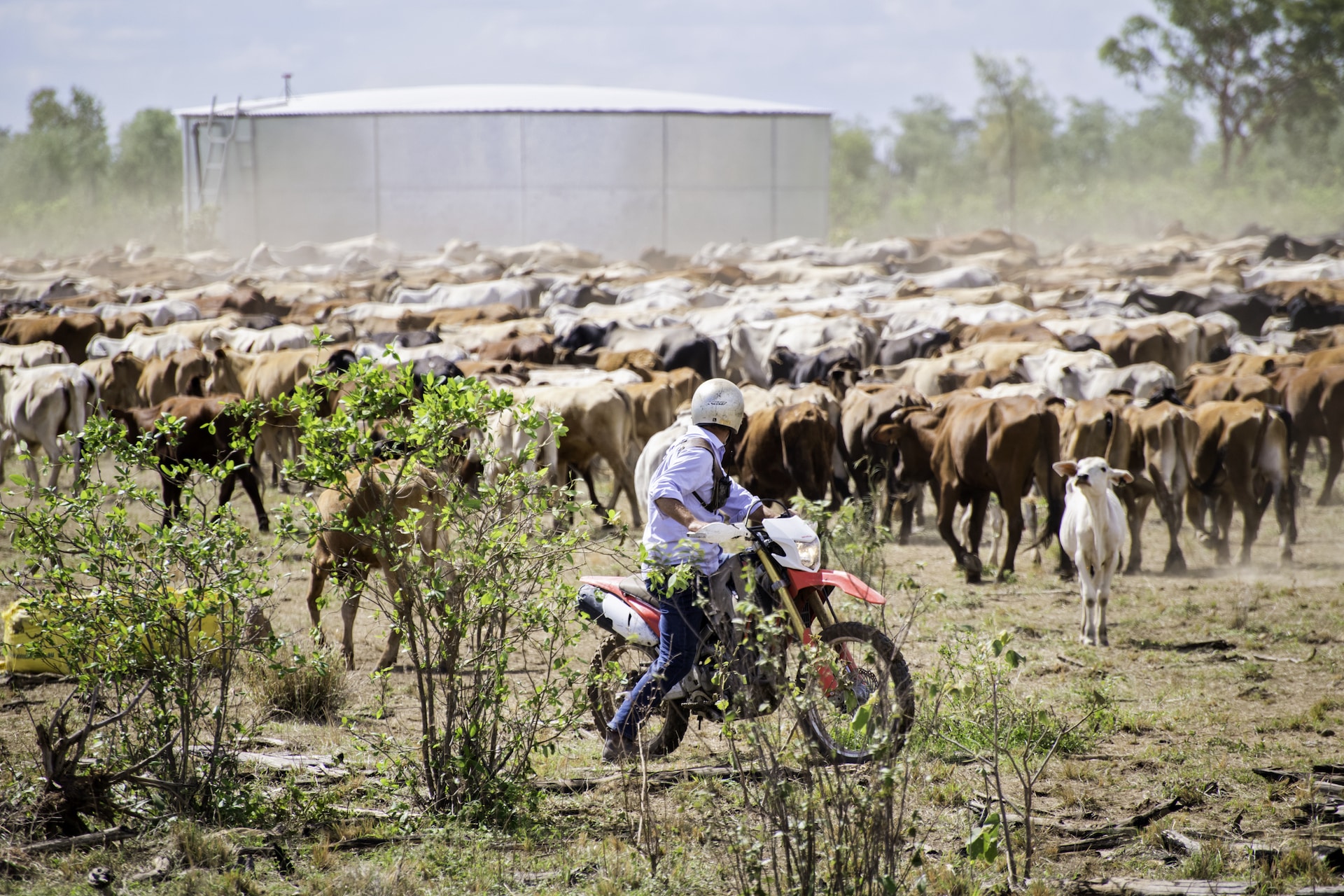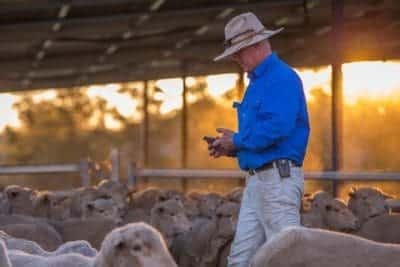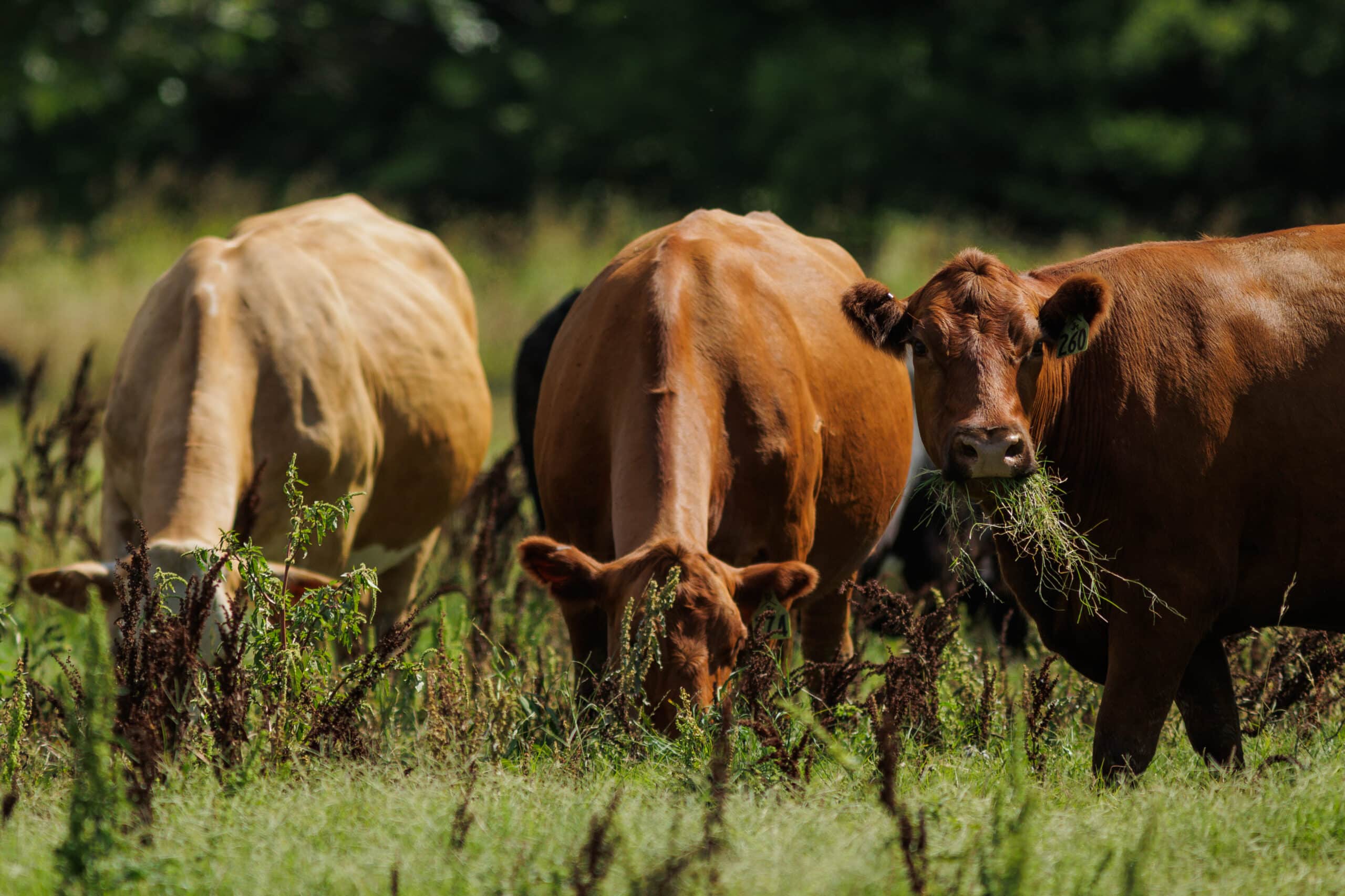Can the Livestock Industry get to Net Zero?

“Humans can do without, and have often done without, much of the other 99.5% of economic activity that is included in GDP. No one has ever done without food. Yet it is precisely the availability of food, and of food security, that climate change raises new questions about.” – Towards Net Zero in UK Agriculture
For livestock farmers, this quote, from University College London’s Professor Paul Ekins, probably rings truer than most. We know that this industry is a vital part of the food supply chain. At the same time, there’s increasing pressure to meet sustainability goals, even as the costs of production increase. The truth is, it can feel a lot like a balancing act where bending in one direction comes at the expense of doing something else.
While sustainability, greenhouse gas management, and the drive to reach net zero have become buzzwords across all sectors, they’ve reached a level of even greater importance in the livestock industry.
Figuring out how to practically implement sustainable ideas is a challenge, but it’s also an opportunity to rethink our industry.
Where are we with Net Zero?
But first, let’s define what net zero means. Simply put, the idea is to offset greenhouse gas (GHG) emissions with carbon sequestration techniques, like growing trees or grassland, until a point is reached where it balances.
In the livestock industry, and especially for those farming with ruminants, it’s a fact that these animals produce a certain amount of GHGs. At present, we also know that the industry is still a long way from reaching that balancing point.
In the UK, for example, agriculture still contributes 10% of GHG emissions (with half of that from livestock and manure). In the US, that number is slightly higher (11%) and in Australia, it jumps to around 13%. As those numbers show us, there’s still work to be done.
As companies around the world commit to climate action, part of their strategy is investing in sustainable supply chains. For farmers, that translates into readily available funding for carbon-smart practices. Bear in mind, you may be required to show baseline data on the emissions your farm produces. For example, in the UK, the Farming Investment Fund provides grants to farmers to improve their farms with equipment and technology that improves sustainability.
Many companies are also prepared to cover the initial costs of tracking software to track your emissions. They are also willing to pay a premium per kg of meat to farmers who digitise and share their data.
For producers, this means there are big benefits to tracking emissions and tracking the impacts of interventions you try on your land.
Different Types of Greenhouse Gases
However, when we start getting into the finer details of exactly what types of emissions livestock are producing it is more complex. For example, agricultural activities contribute relatively little in the way of carbon dioxide (CO2) to global emissions. However they certainly do contribute methane (CH4) and nitrous oxide (N2O).
The difference between these two is that, while CO2 hangs around in the atmosphere for upwards of 300 years, atmospheric methane tends to last just 10-15 years. That said, it must be noted that methane is a more damaging greenhouse gas, in that it warms the atmosphere to a greater degree than carbon dioxide. A third gas we hear a lot about in agriculture is nitrous oxide (N2O). It also warms the atmosphere more than CO2 and stays there for longer than methane.
The point is, when we talk about greenhouse gas emissions and reaching net zero, it’s important to bear in mind that not all of these gases are created equal. By the same token, not all agricultural activities are producing them in the same amounts. Thus, it’s important to manage the overall GHG footprint, rather than focusing only on a specific type of emission.
How farmers manage soil, manure, and animal productivity, for example, can play a big role in the amount of GHGs our farms produce.
Getting to Net Zero
What all of this means for farmers and ranchers is that choosing the right sustainability strategies is an important part of reducing emissions. Which ones work best in each context is also going to vary. And while we can’t cover all the options in this article, here are the ones we consider the “Big Three” when it comes to carbon-savvy farming:
Improving Production Efficiency
The first thing to consider is changes that can be made to improve the efficiency of rearing livestock. For example, ensuring that animals are in the best possible health, optimising your calving intervals, and reducing time to slaughter are all good strategies for boosting efficiency and minimising the amount of greenhouse gases animals produce over their lifetime.
Other improvements relate to animal genetics, such as breeding animals with proven high fertility and disease resistance, or animals with high growth rates.
All of these approaches can ensure lower methane and NO2 production, and therefore lower emissions for farms overall.
Improving Forage Quality and Utilisation
Another change that can be easily applied is improving the quality and utilisation of the forage your animals are fed. Properly managed grasslands, for example, can translate into less forage crop feeding, thereby reducing the carbon footprint associated with growing forage crops like maize.
There are other diet modifications. For example, a higher starch content in feed. Or reducing crude protein, and feeding mixtures of grass and legumes. They can all have an impact, in terms of reducing both methane emissions and nitrous oxide.
There are even feed additives, including nitrate (NO3) and certain types of seaweed, that can be used to reduce CH4 emissions. However, adoption of these is still in the early stages. As such, expert advice should be sought before adding these CH4-reduction techniques into the mix.
When adopting any of these strategies, it’s important to keep in mind the broader carbon footprint of the foodstuffs being used. In other words, you’re not really making progress toward net zero if the production process for the feed is creating emissions on par with what you’ve shaved off from your operations.
Reducing Fertiliser Usage
The third option to consider is strategies to control the amount of nitrogen your operations are producing. A large percentage of nitrogen fertiliser applied to crops isn’t utilised and can enter the atmosphere as NO2. Usage of artificial fertiliser (which is nitrogen-rich) can be reduced by including plants like legumes (which are nitrogen-fixing) in your pastures. These plants add nitrogen back into the soil, provide the additional benefit of improving soil health and fertility, and can even enhance pasture productivity.
Fertiliser usage can also be reduced by precision application, which means focusing on where the fertilisers are most needed. This can be done by testing soil conditions in specific pastures and fields.
Across all of these cases, the key principle is thoughtful, and carefully measured, interventions that enhance productivity while working toward net zero at the same time.
Putting Principles into Practice
As custodians of the land, farmers and ranchers understand most of these principles instinctively. However, it’s only by measuring them, and documenting the outcomes, that they can generate credibility from a sustainability standpoint. As business guru Peter Drucker once put it: “You can’t improve what you don’t measure.”
And that’s the crux of the issue when it comes to aiming for net zero.
It’s not an instant fix. It requires both taking a ‘bigger picture’ long-term view of operations and zooming in on the details. That might mean that in addition to larger-scale changes, you also invest in renewable energy. A cheaper option is using livestock business management software to track your inputs and outputs over time.
Done right, however, these types of changes can help you streamline your operation and cut emissions. Additionally it can be in a way that creates both climate benefits and improves the productivity of your land and animals.
The answer to the question of whether it’s really possible to get to net zero is still an uncertain one. It’s going to be different for each farmer and each situation. In addition, we don’t have enough information yet to offer a one-size-fits-all path to reaching this goal.
What we do know is that working towards it is an opportunity to ensure the future of livestock farming. By creating a more sustainable business you do more than just “tick the right boxes.” You also ensure that you’re building a legacy that’s going to last.
Need a helping hand tracking the best strategies to make your farm more sustainable and improve your net profits? AgriWebb can help you baseline and track farm profitability strategies. Find out more here.



